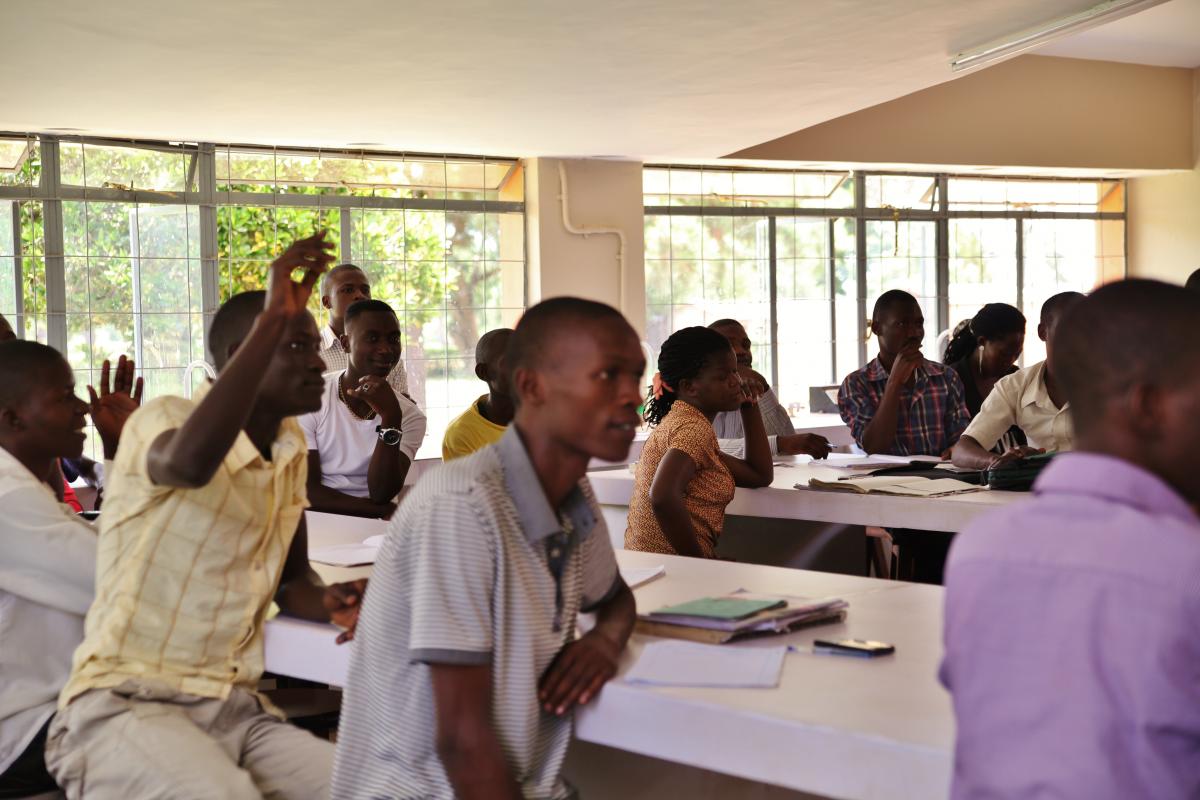Promoting Active Teaching and Learning Through a Stimulating Environment
Insufficient teachers, limited resources,
inadequate infrastructure and the over-crowded classrooms are a few of the
challenging factors affecting the education sector in Uganda. While a number of
interventions are underway to improve the quality of education, focusing on new
teaching methods and creating a stimulating environment can make a considerable
difference.
While access to education has
substantially increased over the years, the declining quality of education is
still a growing concern for many in Uganda. A large number of schools are
afflicted with insufficient teachers, limited equipment and inadequate infrastructure
to meet the needs of the growing classroom population.
The Teacher Training Education
(TTE) project set up by the Belgian development agency and the Ugandan
government seeks to address this problem. The project aims at improving the
quality of secondary teacher education in National Teachers’ Colleges by
strengthening the professional competencies of future teachers and enhancing
infrastructure.
For quite a long time, teachers
have relied on the traditional teacher-centered education styles where they are
viewed as the information provider while students simply listen, memorise and
take notes. This tactic has proven to limit the skills and knowledge
development of students. However, accompanied by the fact that teachers are
grappling with large numbers of students in a single classroom, limited
teaching resources and poor infrastructure, the quality of education has been
severely watered down.
One of the main objectives of the
TTE project is to improve the quality of teacher training by introducing a learner-centered
approach to teaching known as the Active Teaching and Learning (ATL). This
means that the learning systems shift focus from the teacher to the student and
provoke independent reasoning, problem solving and critical thinking. Through ATL,
students are more likely to retain a higher percentage of knowledge and skills
because they engage with materials, participate in and out of the classroom and
exchange information with their peers.
ATL is improving learning in a
way that benefits both the teacher and the student. Phionah Namutosi, a student
from National Teachers’ College Mubende shared the experience.
“During my time as a student,
teachers were focused on exams and I found myself not understanding a lot of
the subjects in the classroom. Right now with Active Teaching and Learning
approach, lessons are more interesting and I gain so much more than before.”
“This way of learning is more
realistic than theoretical,” explains Nawuma Sarah, a mentor teacher at
National Teachers’ College Kaliro. The
students enjoy more when they are involved and in control of their learning. As
a teacher, I have changed practice. I used to lecture to my students but now my
role is to facilitate learning while using the different ATL methods,
techniques and resources.”
Ultimately providing better
teaching methods is one way to improve the quality of education. In order to
take a step further, a substantial investment has to be made on infrastructural
support. This is because a conducive learning environment is key for optimal
learning.
Through the infrastructural
component of the TTE project a lot of emphasis has been put on creating a
healthy functional learning environment that enhances Active Teaching and
Learning. The architectural designs and
infrastructural set-up take into account several important factors that focus
on innovation, sustainability, energy efficiency and the natural environment. Classrooms
benefit from sufficient natural daylight and a well-designed cross ventilation
sets off the higher tropical temperatures without any artificial intervention.
The learning environment has been
enhanced through the creation of spacious and flexible classrooms. These
classrooms have electricity sockets installed in the centre to ease projector
and computer use and writing boards and furniture that can easily be
repositioned. This makes it easier for teachers to step away from the teacher
centered approach and use ICT as an extra learning tool.
Another contribution to improving
ATL is the creation of outdoor learning spaces. This gives room and resources
to both teachers and students to explore different learning techniques and
encourages creativity.
While classroom areas have been
majorly considered, libraries have not been forgotten! Since libraries are the
centre of learning, it made it quite essential to create an engaging learning
environment. Innovations such as small working rooms for groups, wireless
internet and availability of computers have transformed libraries in the
National Teachers’ Colleges into a hub of knowledge with user-friendly
facilities.
Nawuma Sarah, a mentor teacher in
NTC Kaliro shared her views on the new infrastructural developments. “The
classrooms are quite accommodative now and this makes it helpful in creating
learning centres and utilizing other ATL techniques. Most of our students are
from a rural setting and provision of such facilities has given them an
opportunity to learn more skills, carry out research and improve their learning
process.”
The new architectural developments
have also gone as far as renovating and building more than education blocks in
the Colleges. These include sports facilities, accommodation facilities and
creating safe learning environments based on the different needs of the College
staff and students.
Infrastructure has played a big
role in stimulating learning especially in the National Teachers’ Colleges
(NTCs) where the project is reaching over 7,235 students through the first and
second phase of the project. The second phase of the project is focusing on
pedagogy for NTC Kabale and Mubende, while NTC Muni and Kaliro get special
attention on accommodation for students and teachers. Construction designs are presently well
underway in order to start construction by the end of 2018 and get completion by
early 2020. Finally, the project is also setting up an infrastructural
maintenance programme for all NTC’s including NTC Unyama which got infrastructure
support from other donors.
Dernières actualité de ce projet
Pas d'actualité

